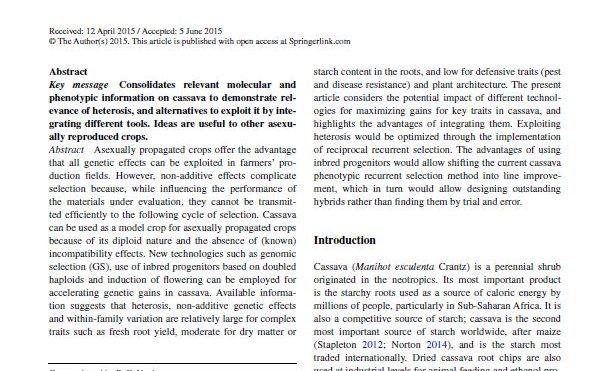This article consolidates relevant molecular and phenotypic information on cassava to demonstrate the relevance of heterosis, and alternatives to exploit it by integrating different tools. The ideas are useful to other asexually reproduced crops. Asexually propagated crops offer the advantage that all genetic effects can be exploited in farmers’ production fields. However, non-additive effects complicate selection because, while influencing the performance of the materials under evaluation, they cannot be transmitted efficiently to the following cycle of selection. Cassava can be used as a model crop for asexually propagated crops because of its diploid nature and the absence of (known) incompatibility effects. New technologies such as genomic selection (GS), use of inbred progenitors based on doubled haploids and induction of flowering can be employed for accelerating genetic gains in cassava. Available information suggests that heterosis, non-additive genetic effects and within-family variation are relatively large for complex traits such as fresh root yield, moderate for dry matter or starch content in the roots, and low for defensive traits (pest and disease resistance) and plant architecture. This article considers the potential impact of different technologies for maximising gains for key traits in cassava and highlights the advantages of integrating them.
Region: Sub-Saharan Africa
Date published:
2015
Published by:
International Journal of Plant Breeding Research
Type of resource:
Resource topic:
Cassava, cloning, Genetics
Project/Programme: Not specific
Pest/Disease: Not specific
Pages:
24
File type:
External link (1.59 MB)




